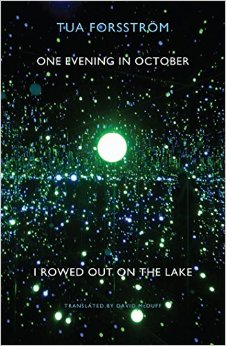THERESE by Claire Cronin
– Reviewed by Becky Varley–Winter –
Claire Cronin‘s Therese is one poem in fifteen parts on the life of Saint Therese of Lisieux, released as part of a free PDF chapbook series (which you can browse here). It’s one of the most impressive things I’ve seen for £0, so I encourage you to read it and send Cronin flocks of birds or videos of baby elephants as some kind of payment.
I knew very little of Saint Thérèse, but the immersion in her life is quick and effortless. The poem reimagines her empathetically from a distance: you can feel the poet collecting scraps of biography, absorbed in tracing somebody else’s history. She is a sensitive and bereaved child, prone to crying and nervous illnesses, ‘the tremors […] a blue thread through her life’. Her capacity for suffering is one with her aptitude for religious devotion:
Encouraged to renounce herself
by cloisters overhead
Therese dressed her dolls
in Carmelite lace
These verses are themselves laced in beauty, which could create a sense that they’re a confection, but the young saint’s very real pain absolutely undoes that idea: ‘Therese wakes each day violetly / crying in and out of speech’. ‘Violetly’ ties back into the thread of blue, melancholic tremors.
Thérèse’s immaculate, small identity has become a myth, partly constructed and inaccessible: ‘Before she was a photograph / Therese lived in a white dress like a lake’. This reminds me of Simone de Beauvoir’s The Second Sex and Antonia White’s Frost in May, describing expectations of little girls as perfect creatures, devotional dolls. ‘The Little Queen / a golden cloud of curls’. There is something a bit fearful in this ‘unspeakable sweetness‘. Therese is ‘much petted’, but as a kind of ornament, her heart ‘a pear inside a bridal chest’, all ‘safely under gauze’ until the final two lines of this segment:
Therese wept when she noticed how
the roses lose their colour in the dark.
There are hints of her body troubling her: ‘The body is endlessly receiving its own shadow‘ is followed, later, by Therese ‘fitful in her shadow’. Then an image of the convent girls’ bodies fading: ‘Even their fragrant hair would blanch / white as the wigs of the previous century’.
It is true that there were days
when Therese would not speak at all
Cronin seems to be trying to make Therese ‘speak’ – or is implicitly troubled by her refusal to speak – and there are italicised lines, making me wonder if these are quotations from Therese’s own writing:
Therese began to suffer from the throat
I want to live without speaking to myself
as if the singing birds are errors
Silence is not, necessarily, always oppressive, but in these poems it is, due to the suffering that goes with it, ‘affliction’ and erasure: ‘Therese’s I retreating’. Cronin gives tender attention to the passions of the young saint’s cloistered life, the entranced bird paralleling her own silencing:
Two themes were dear to her:
A boat that hurries towards the light
A singing bird that falls into a trance
Then Therese reaches the nervous energy of wanting to die, ‘To vanish as a glass poured into soil‘, her delight when she coughs up blood. Denying bodily pleasure, ‘She did not sit near fire, knowing how / its heat would comfort her’. She says she wants to ‘work‘, not rest, in heaven. She may be bedded ‘inside the wound’, but Therese is not just a victim in this poem: the self-denial feels like an intensity directed inwards, and Cronin conveys someone who seems to have wanted and lived fiercely through pain, in the absence of other outlets. This poem is not only a paean to a dead saint, but an exploration of the youthful impulse to wear yourself thin as a sign of yearning. Cronin’s imagery might have a sensuous surface, but this is harsh work. Rather than simply glamourising her subject, Cronin responds to her with uneasy, troubled care, as an act of devotion.





